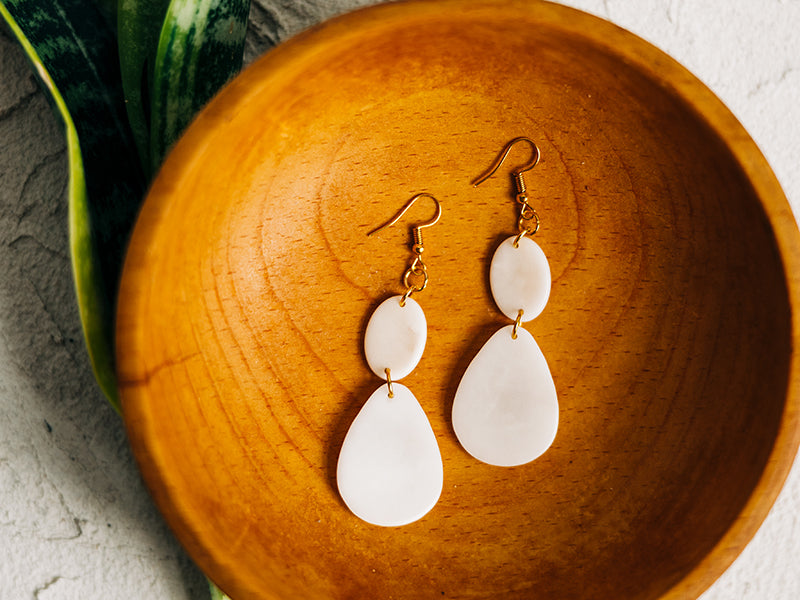
Tagua—a renewable alternative to plastic and ivory
Nestled in the crowded hills of Bogota, colorful beads spill from orange plastic laundry baskets, stacked on tables, and floors.

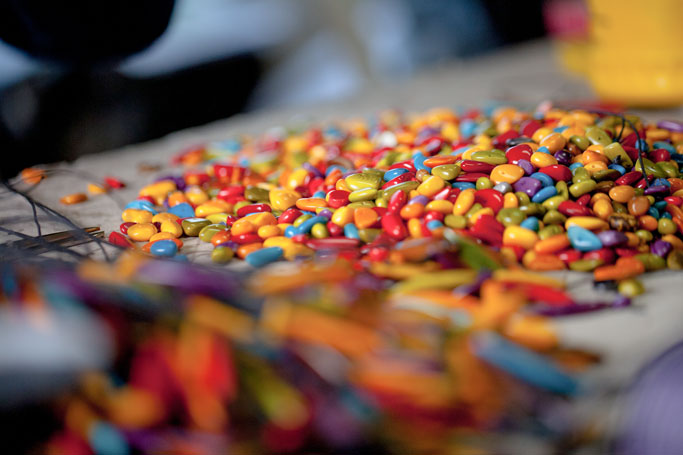
Claudia Zambrano winds her way to the workshop where she learned to craft simple bracelets more than a decade ago with Sapia.
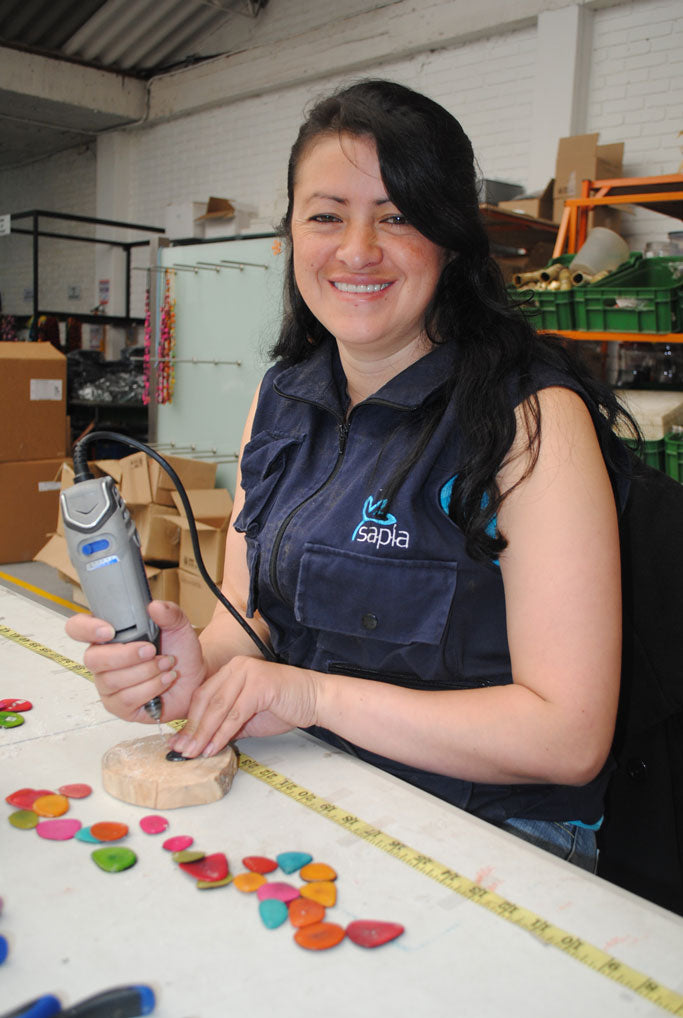
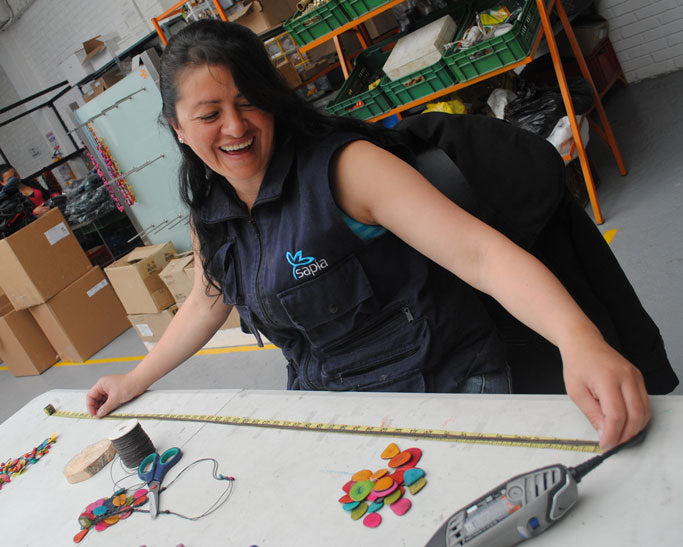
Today, she runs her own workshop and employs many of her neighbors designing tagua jewelry.
What is tagua?
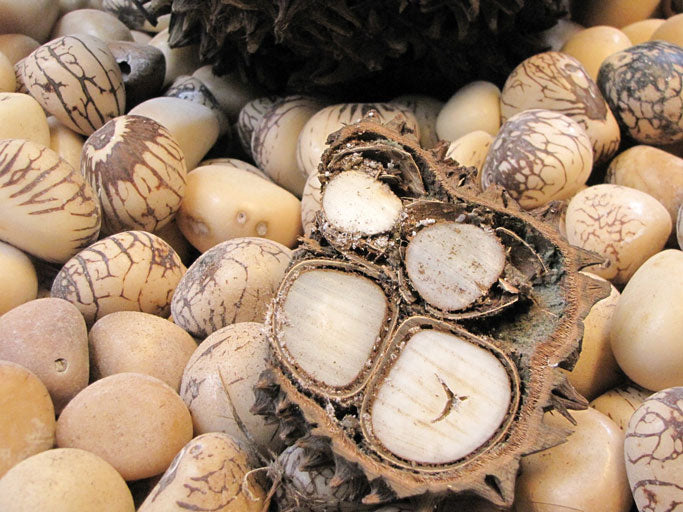
They’re seeds! Tagua are harvested from the towering Phytelephas palm tree. The tree’s name translates to elephant plant, which is fitting, since jewelry made from it is compared to the beauty of ivory! (Sometimes people call the seeds, tagua “nuts.”)
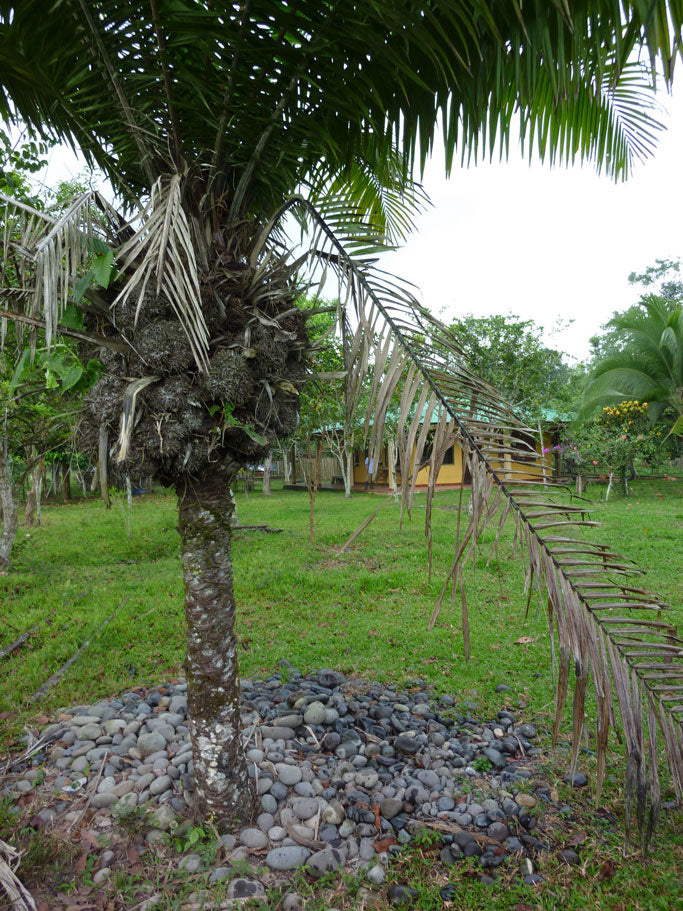
Five to six seeds grow in each of the scaly pods.
Locals harvest them by waiting for them to ripen and fall to the ground on their own.
The palms grow in rain forests throughout South America—in Ecuador, Panama, Peru, Bolivia, and Columbia. Trees produce seeds for more than 100 years, once they’ve matured, so are considered a renewable resource.
How is tagua made into jewelry?
Tagua has a similar look and feel to elephant ivory, and is an eco-friendly alternative for use in:
- Buttons (also called corozo buttons, made since the 19th century)
- Beads
- Chess pieces
- Decorative carvings
- Stamps
- Luxury jewelry
- and any number of products we can imagine.
TAKE ACTION: ENCOURAGE COMPANIES TO MAKE THE SWITCH
We can imagine better. Ask the companies where you buy jewelry if they already use tagua? If not, suggest they try it. Sustainable alternatives to ivory and plastic can help:
- Elephants who need time to repopulate. The sanctioned sell-off of existing ivory stockpiles, as well as continued illegal sales mean elephants are still endangered.
- Move away from plastics that pollute our oceans and clog landfills.
Ask for alternatives—what you buy makes a difference.
It’s beautiful. It’s light. Can be neutral or bright.
Replaces plastic.
Replaces tusks.
It’s TAGUA nuts!

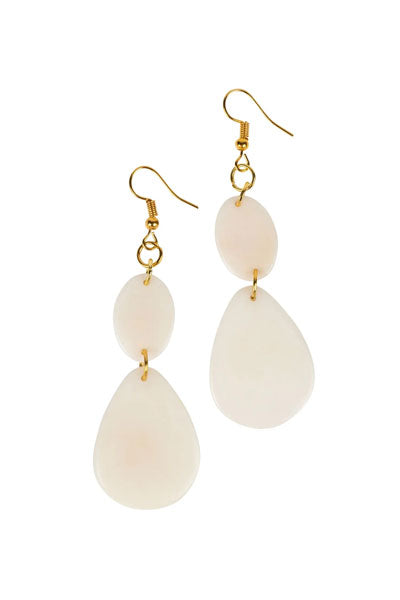
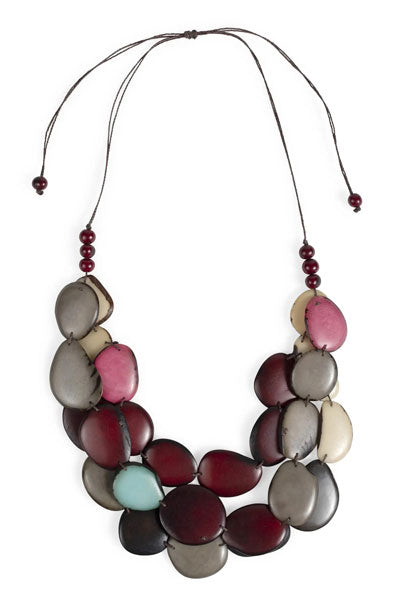

Leave a comment